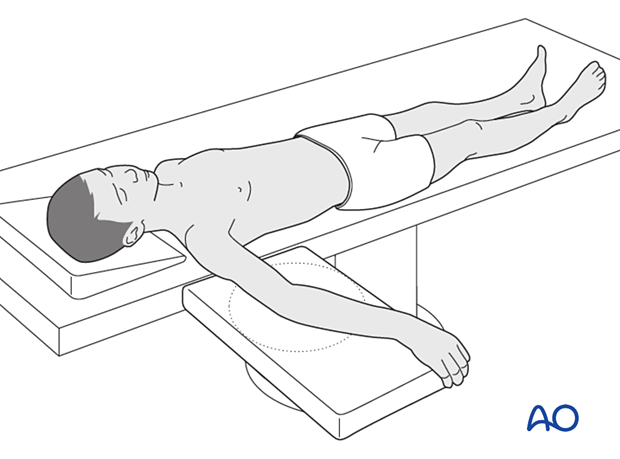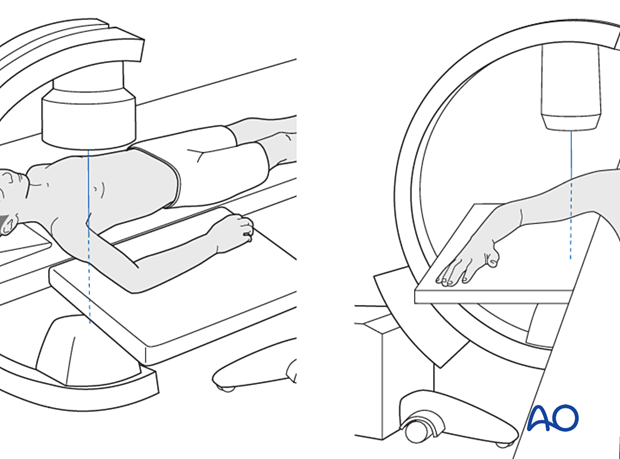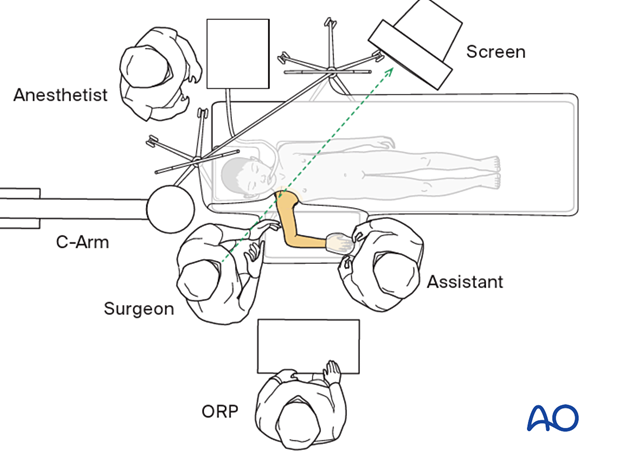Supine position
1. Introduction
The supine patient position with the arm on a radiolucent arm board can be used for deltopectoral and lateral approaches to the proximal humerus.

2. Preoperative preparation
Consider the additional material on preoperative preparation.
3. Anesthesia
The addition of regional and local anesthesia may reduce postoperative pain.
4. Prophylactic antibiotics
Antibiotics are administered according to local policy and specific patient requirements.
5. Patient positioning
The patient is positioned with the fractured extremity as close as possible to the edge of the table.
For optimal visualization of the proximal humerus, the patient should be positioned to avoid the table edge at the level of the shoulder and this should be confirmed with the image intensifier before draping.
This may require gentle lateral rotation of the neck and trunk with appropriate padding and attention to pressure areas.
By abducting the shoulder, it is possible for the surgeon and the assistant to sit on opposite sides of the hand table.

6. C-arm positioning
There are two possible positions for the C-arm:
- Parallel to the operating table
- Perpendicular to the operating table

7. Skin disinfecting and draping
Disinfect the entire arm down to the fingertips, with an assistant holding the arm with gentle traction to avoid neurovascular injury.
Drape the hand in a glove or leave it free.
Drape the arm up to the axilla.

8. OR set-up
The optimal position of the surgeon is defined by anatomical requirements of the fixation and may need to be changed during surgery.
The position of the screen should allow a direct view for the surgeon.














